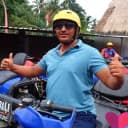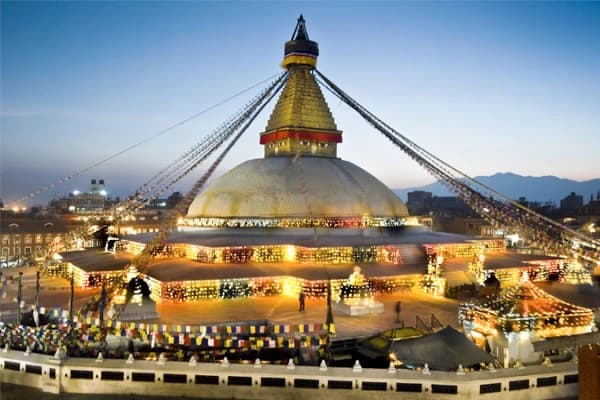The Everest Region, home to the world's tallest peak, is a trekker's and mountaineer's paradise. Dominated by rugged landscapes, rich Sherpa culture, and excellent Himalayan views, this region combines for an exciting experience among real adventure lovers. From dramatic mountain passes down to tranquil valleys, the Everest Region has captivated trekkers worldwide.It ranks among the best treks in Everest Region, with the Everest Base Camp Trek 14 Days being one of the most popular and sought-after experiences.
Introduction
Each of these 7 best treks in Everest Region offers something different, from simple to extreme levels, catering to various classes of adventurers. Whether conquering lofty high-altitude peaks, sauntering along enchanting lakesides, or leisurely relaxing at luxurious lodges with panoramic views of mountains, each has something different.
The options range from great expeditions to relaxed Everest trek routes to ensure every traveler gets the ultimate personal adventure in uniqueness with the Everest Region. This diversity ensures that trekking in Nepal is a unique and personal adventure, catering to both advanced trekkers and those looking for a more relaxed yet immersive Himalayan experience.
7 Best Treks in Everest Region:
- Everest Base Camp Trek
- Everest Base Camp Trek with Island Peak Climb
- Everest Base Camp Trek with Helicopter Return - 9 Days
- Everest Base Camp Trek via Cho La Pass & Gokyo Lakes
- Gokyo Lake Trek
- The Everest View Luxury Lodge Trek
- Everest Three High Passes Trek
1. Everest Base Camp Trek

Everest Base Camp Trek is one of the most famous routes in Nepal and is the basis of Mount Everest. The trek begins from Lukla and cuts through lively Sherpa villages, fabulous landscapes, and gorgeous forests. You will experience the culture of the local people, visit Buddhist monasteries, and have stunning views of other Himalayan peaks. Famous stops on the trek include Namche Bazaar and Tengboche Monastery.
Key Highlights
- Iconic Views of Mount Everest: Hiking through some picturesque landscapes with uninterrupted views of Everest, Lhotse, Nuptse, and Ama Dablam, together with glaciers and ice falls, are truly amazing.
- Sherpa Culture and Traditions: Observe the way of life in the traditional Sherpa villages—the opportunity to learn about customs, hospitality, and spiritual connection to the mountains.
- Namche Bazaar: Regarded as the gateway to Everest, it is a busy trading center where each type of shop, cafe, and cultural site seems to mix the local with the global.
- Tengboche Monastery: The famous Tengboche Monastery is one of the highest monasteries in the world, set at the backdrop of magnificent mountain vistas with a serene atmosphere to take a rest for the trekkers.
- Kala Patthar Viewpoint: Climb to the summit of Kala Patthar for breathtaking close-up views of Mt. Everest, particularly during sunrise or sunset.
- Diverse Terrain and Ecosystems: The trek passes through various topographies- plush forests, rhododendron groves, alpine tundra, and glaciers—a true variety of Himalayan terrain.
More Information Regarding Everest Base Camp Trek
- Maximum Altitude: 5,545 meters (Kala Patthar)
- Duration: 12-14 days
- Best Season: Spring (March-May) and Autumn (September-November)
- Difficulty Level: Moderate to challenging
- Accommodation Type: Tea houses
- Required Permits: TIMS card, Sagarmatha National Park permit
- Major Attractions Along the Route: Tengboche Monastery, Namche Bazaar, Khumbu Glacier
Explore More Package like this: Everest Panorama Trek - 9 Days
2. Everest Base Camp Trek with Island Peak Climb

Everest Base Camp Trek with Island Peak Climb combines the actual Everest trek route with the thrilling climb of Island Peak at 6,189 meters. This trek is recommended for those interested in visiting the beauty of EBC and climbing to the summit. The route passes through some of the most beautiful landscapes via Sherpa villages.
Key Highlights
- Combination of Trekking and Climbing: For an adventure-packed achievement, enjoy the ever-famous Everest Trek along with the thrilling climb of Island Peak.
- Island Peak Summit: The major highlight of this trip is the panoramic summit vistas of Mount Everest, Lhotse, Makalu, and other towering peaks.
- Sherpa Culture: The route contains the culture of Sherpa, where one can visit Buddhist monasteries and get fascinated by the warm hospitality of the local people.
- Trekking to EBC: The famous trek to EBC follows a path full of remarkable mountain scenery and includes iconic features such as Namche Bazaar and Tengboche Monastery.
- Challenging Climb: The climb to Island Peak is demanding and requires prior technical skills and high-altitude endurance, making it perfect for the trekker seeking a severe challenge.
- Breathtaking Mountain Views: From Base Camp and the summit of Island Peak, you can see marvelous views of the mountains, including Mount Everest, Lhotse, and Makalu, among others.
More Information Regarding Everest Base Camp Trek with Island Peak Climb
- Maximum Altitude: 6,189 meters (Island Peak)
- Duration: 18-20 days
- Best Season: Spring (April-May) and Autumn (October-November)
- Difficulty Level: Challenging
- Accommodation Type: Tea houses and camping
- Required Permits: TIMS card, Sagarmatha National Park permit, Island Peak climbing permit
- Major Attractions Along the Route: Island Peak base camp, Chhukung Valley, panoramic Himalayan views
3. Everest Base Camp Trek with Helicopter Return - 9 Days

The Everest Base Camp Heli Return Trek is an incomparable time-saving plan to glimpse the Everest section. Trekkers hike through iconic villages and breathtaking landscapes within nine days until they reach Everest's Base Camp. The helicopter ride from Lukla back to Kathmandu saves time against retracing the entire Everest trekking route uphill yet still affords great mountain aerial views.
Key Highlights
- Quick and Efficient Trek: Ideal for trekkers who have a scarcity of time but intend to see EBC.
- Helicopter Ride Back: Avoid the return trek and take a helicopter ride from Lukla to Kathmandu for an above-the-views exchange of the Himalayas.
- Everest Base Camp: Come to the iconic base camp and stand in the heart of the world's tallest mountain, surrounded by stunning views.
- Stunning Himalayan Views: Trek through a landscape with beautiful peaks, including Everest, Lhotse, and Ama Dablam, offering breathtaking scenery at every turn.
- Cultural Experience: Throughout the trek, you will pass by Sherpa villages, visit monasteries, and catch glimpses into the culture.
- Adventure and Comfort: One can feel the adventure in the trek and, simultaneously, comfort, as the return would be in a helicopter, thus minimizing physical stress by returning through a hike.
More Information Regarding Everest Base Camp Trek with Helicopter Return - 9 Days
- Maximum Altitude: 5,364 meters (EBC)
- Duration: 9 days
- Best Season: Spring (March-May) and Autumn (September-November)
- Difficulty Level: Moderate
- Accommodation Type: Tea houses
- Required Permits: TIMS card, Sagarmatha National Park permit
- Major Attractions Along the Route: Scenic helicopter views, Tengboche Monastery, Khumbu Icefall
Looking for a quick Everest experience? Our 3-Day Short Everest Trek with Helicopter Return offers stunning views in record time.
4. Everest Base Camp Trek via Cho La Pass & Gokyo Lakes

The Everest Base Camp Trek via Cho La Pass & Gokyo Lakes represents a considerably more adventurous and spectacular version of the classic Base Camp trek. It makes its way through the beautiful Gokyo Lakes and across the demanding Cho La Pass at an elevation of 5,420 meters, offering unparalleled views of Everest and its surrounding peaks.
Key Highlights
- Gokyo Lakes: Hike through the stunning Gokyo Lakes, a set of turquoise-colored lakes set against the backside of towering peaks, including Mount Everest and Cho Oyu.
- Cho La Pass: Cross the challenging Cho La Pass at 5,420 meters, one of the toughest parts of the trek. This is the ultimate mountaineering challenge with stunning panoramic views.
- Everest Base Camp: Reach the iconic EBC with breathtaking views of Everest, Lhotse, and other peaks.
- Kala Patthar Viewpoint: The Kala Patthar viewpoint offers panoramic views of Mt. Everest, making it one of the best spots on this trek.
- High-altitude Adventure: Hike at high altitudes with breathtaking scenes of icy passes, quiet lakes, and alpine meadows.
- Sherpa Villages and Culture: Go through Sherpa villages, visit Buddhist monasteries, and enjoy the hospitality of the region's people.
More Information Regarding Everest Base Camp Trek via Cho La Pass & Gokyo Lakes
- Maximum Altitude: 5,420 meters (Cho La Pass)
- Duration: 18-20 days
- Best Season: Spring and Autumn
- Difficulty Level: Challenging
- Accommodation Type: Tea houses
- Required Permits: TIMS card, Sagarmatha National Park permit
- Major Attractions Along the Route: Gokyo Ri, Ngozumpa Glacier, scenic Cho La Pass crossing
5. Gokyo Valley Trekking

Gokyo Valley Trekking is similar to the Everest Base Camp but focuses on Gokyo Lakes and its surrounding peaks. It normally starts with a trek up to beautiful Sherpa villages, lush valleys, and glaciers at high altitudes up to the serene Gokyo Lakes, a series of turquoise-colored lakes between the Himalayas. Besides, it offers excellent views of Everest, Makalu, and Cho Oyu.
Key Highlights
- Gokyo Lakes: A day trip to the beautiful Gokyo Lakes, a series of sparkling turquoise-colored lakes surrounded by towering mountains, offering one of the region's most peaceful and scenic spots.
- Gokyo Ri Viewpoint: Hike to Gokyo Ri at 5,357 meters for the most superb view of Everest, Lhotse, Makalu, Cho Oyu, and other peaks in the Himalayas.
- Fewer Crowds: One of the best options, instead of the EBC Trek, is to avoid crowds for much quieter trails and peaceful surroundings.
- High-altitude Adventure: Get on a trek that is highly variable in scenes, with alpine meadows, glaciers, and snowy ridges at extremely high altitudes.
- Sherpa Villages: Hike through beautiful Sherpa villages like Namche Bazaar and Dole, where you might learn a thing or two about the culture and traditions of the people.
- Stunning Views of Everest: Although this isn't a trek to EBC, it offers spectacular views of Everest, Lhotse, and other majestic peaks along several route points.
More Information Regarding Gokyo Lake Trek
- Maximum Altitude: 5,357 meters (Gokyo Ri)
- Duration: 12-15 days
- Best Season: Spring and Autumn
- Difficulty Level: Moderate
- Accommodation Type: Tea houses
- Required Permits: TIMS card, Sagarmatha National Park permit
- Major Attractions Along the Route: Gokyo Lakes, Gokyo Ri viewpoint, remote Sherpa villages
Explore More Gokyo Package like:
6. The Everest View Luxury Lodge Trek

The Everest View Luxury Lodge Trek is an easier and more relaxing way to explore the region. It takes you to some of the best viewpoints of Mount Everest and lets you stay in luxury lodges, which are more comfortable than standard teahouse treks. It's ideal for those who want to enjoy stunning mountain views, explore Sherpa culture, and visit iconic spots like Namche Bazaar and Tengboche without the strenuous challenges of a long trek.
Key Highlights
- Luxury Lodging: Enjoy overnight stays in luxury lodges with modern amenities, hot showers, comfortable rooms, and delicious meals to make Everest region trekking less rigorous.
- Everest Viewpoint: This involves trekking to famous viewpoints, such as Tengboche or the Everest View Hotel, for stunning panoramic views of Mt. Everest and the surrounding peaks.
- Shorter Trek Duration: The trek duration is shorter and thus not as exhausting, which is ideal for those wanting to experience the region without doing an extensive, heavy-duty trek.
- Sherpa Culture and Villages: This will be a ramble around traditional villages of Sherpas, such as Namche Bazaar, where one will experience the entire culture, monasteries visited, and people.
- Tengboche Monastery: A trip to Tengboche Monastery, situated in a striking position with clear views of Everest and other peaks, is one of the region's most spiritual and cultural attractions.
- Scenic Trails: The trek offers breathtaking views of Everest, Lhotse, Ama Dablam, and other peaks, along with picturesque landscapes, forests, and alpine meadows.
More Information Regarding The Everest View Luxury Lodge Trek
- Maximum Altitude: 3,870 meters (Khumjung)
- Duration: 5-7 days
- Best Season: Spring and Autumn
- Difficulty Level: Easy to moderate
- Accommodation Type: Luxury lodges
- Required Permits: TIMS card, Sagarmatha National Park permit
- Major Attractions Along the Route: Everest views, luxury accommodations, Sherpa villages
For anyone looking to experience Everest with ease and comfort, our 5-Day Everest View Luxury Lodge Trek with Helicopter Return offers breathtaking views and a helicopter return for a memorable adventure.
7. Everest Three High Passes Trek

The Everest Three High Passes Trek has to be one of the region's toughest yet most rewarding treks. It leads you across three high-altitude passes: Kongma La (5,535 meters), Cho La (5,420 meters), and Renjo La (5,360 meters). It is an exhilarating experience for seasoned trekkers in pursuit of adventure.
Key Highlights
- Three High Passes: Cross three challenging high-altitude passes- Kongma La, Cho La, and Renjo La— which offer breathtaking mountain views and an actual test of endurance.
- Everest Base Camp: Visit the famous EBC and stand at the foot of the tallest mountain in the world, reeling under the grandeur of the peaks around it.
- Gokyo Lakes: Trek to the beautiful Gokyo Lakes and the Gokyo Ri Viewpoint for views of Mount Everest and Cho Oyu, among other towering peaks.
- Unmatched Views: Spectacle the panoramic views of the Everest massif, including Everest, Lhotse, Makalu, and Ama Dablam, along with glaciers and dramatic landscapes.
- Challenging Terrain: Experience some demanding trails with stiff ascents, pathways filled with boulders, and high-altitude passes that make the trek recommended for seasoned trekkers only.
- Cultural Immersion: Trek through traditional Sherpa villages and Buddhist monasteries to experience this region's unique culture and hospitality.
More Information Regarding Everest Three High Passes Trek
- Maximum Altitude: 5,535 meters (Renjo La Pass)
- Duration: 18-21 days
- Best Season: Spring and Autumn
- Difficulty Level: Very challenging
- Accommodation Type: Tea houses
- Required Permits: TIMS card, Sagarmatha National Park permit
- Major Attractions Along the Route: Kongma La, Cho La, and Renjo La passes, panoramic mountain views
Final Thoughts
From classic Everest Base Camp to high adventure such as the Three High Passes Trek, the best treks in Everest Region offer a perfect blend of challenging climbs, scenic views, and luxury experiences. With its stunning landscapes and rich Sherpa culture, this region remains one of every trekker's dream destinations.
Real Adventure welcomes all trekkers who plan to trek to Everest Base Camp Trek in 2025. EBC Trek opportunities in January will make your trek safe and memorable.
FAQs
What is the best time to trek in the Everest region?
The best time to trek in the Everest region is spring and autumn. During these months, the sky is usually clear, temperatures are moderate, and it rarely rains. Thus, this period is most suitable for trekking. Winter and summer are either too cold or rainy for comfortable trekking.
What is the easiest trek to see Mount Everest?
The Everest View Trek is one of the easiest ways to see Mount Everest up close without committing to a long, difficult trek. This trek typically takes around 5-7 days and reaches up to Tengboche, offering spectacular views of Everest and other peaks.
What are the special features of trekking in the Everest region of Nepal?
Trekking in the Everest region is famous for its breathtaking mountain views, rich Sherpa culture, and iconic landmarks like the Tengboche Monastery and Sagarmatha National Park. Trekkers can enjoy diverse wildlife, including yaks, snow leopards, and Himalayan pheasants.
Which route to Everest is the hardest?
The Everest Three Passes Trek is considered one of the hardest routes to Everest. It crosses three high mountain passes—Kongma La, Cho La, and Renjo La—which are all above 5,000 meters (16,404 feet), making it a physically demanding trek with challenging conditions.
Which trek has the best view of Everest?
The Everest Base Camp Trek is known for some of the best views of Everest, especially from places like Kala Patthar, where trekkers get a panoramic view of Mount Everest and surrounding peaks.
Which trail is most famous in Nepal?
The Everest Base Camp Trek is Nepal's most famous trail. It attracts thousands of trekkers every year who come to see Mount Everest and experience the culture of the Khumbu region.
Why is Nepal famous for trekking?
Nepal is famous for trekking due to its diverse landscapes, high-altitude mountains, and rich cultural heritage. Home to eight of the world’s highest peaks, including Mount Everest, Nepal offers a range of treks for all levels, from easy walks to challenging routes.
Do I need to be experienced to do these treks?
Some treks, such as the EBC Trek, require little experience but rather fitness. Others may require experience in high-altitude trekking or mountaineering, such as the Everest Three High Passes Trek and Everest Base Camp with Island Peak Climb. Whatever the trek, preparation and acclimatization are the keys to success.
What is the accommodation like during the trek?
Accommodation in the Everest region varies according to treks. Standard treks use teahouses with basic facilities such as shared rooms and communal bathrooms. In contrast, luxury treks offer up-scale lodges featuring private rooms, modern amenities, and more comfortable settings. The quality of accommodations improves as you reach lower altitudes.
How difficult is the EBC trek?
The trek to EBC is moderately difficult, as it rises to high altitude. It involves 5-8 hours of walking each day. It's considered non-technical and does not require prior mountaineering experience; however, proper acclimatization is required to avoid AMS, and one must be in good shape to enjoy it.
Recommended Read: Everest Base Camp Trek Difficulties
What should I pack for an Everest region trek?
The trekking requires warm, breathable, and moisture-wicking clothing, mostly in layers, trekking boots, a sleeping bag, and a first-aid kit. Other items include sunscreen, a headlamp, trekking poles, and water purification tablets since you will be trekking into areas where facilities are limited.
Recommended Read: Packing List for Everest Base Camp Trek



-(7).webp&w=3840&q=75&dpl=dpl_GDHRyonDC5uCJ5MtiFRDmK8W8YHj)

-(5).webp&w=1200&q=75&dpl=dpl_GDHRyonDC5uCJ5MtiFRDmK8W8YHj)
